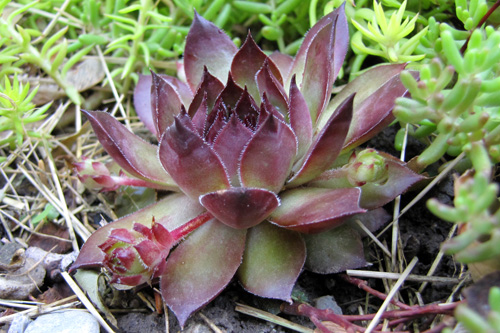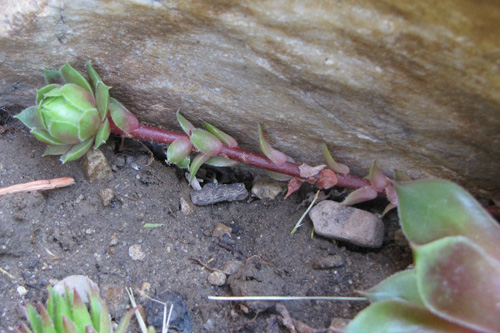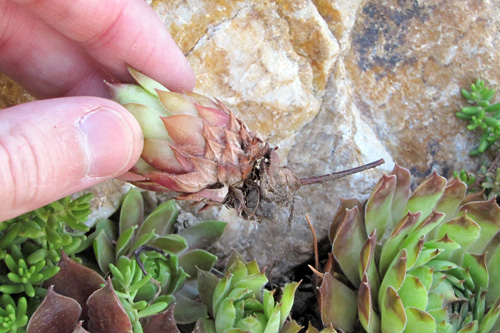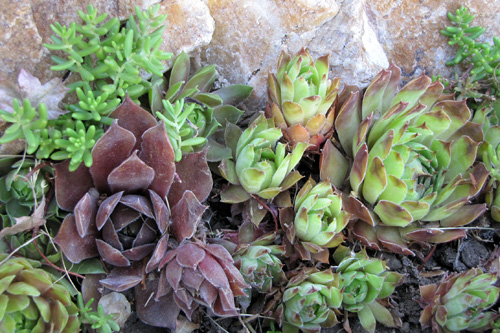Tips to Propagate Hens and Chicks
Jun 20th 2012
In the past week, several people have contacted me asking for information on propagating hens and chicks. I guess it is just that time of year again. As the weather warms from winter into spring, sempervivum plants begin to put out babies. By the time summer hits those baby chicks have grown quite a bit and people start to wonder, "Do I pull this chick off now, or leave it on the stem?"
When to Propagate
Offsets (that's the official name for the baby chicks produced by the mother plant) begin as tiny nubs inside the leaves of their mother. These small, bud like offsets are then pushed away from the parent plant on stems called stolons. One of the pleasant benefits of sempervivum succulents is that one plant can produce many offsets.

Depending on the hen and chick variety and the space available to the plant, it may grow a very long stem for its offsets in an effort to spread. The offset will grow from a bud shape into the typical rosette as seen in the photo below. However, the stolon connecting the mother and offset has leaves and is still very healthy. This means that the hen is still feeding the chick and it isn't quite time to break them apart.

Note: Sometimes the chick plant does not look exactly like the mother plant. Colors may be different. Shapes may be different. Varieties often grow into their color or grow into their plant shape.
Ideally you will let the plants grow together until the chick puts out its own roots and the stolon begins to wither. This is when you know that they are ready to be transplanted. However, hens and chicks don't always live in an ideal world. If you happen to break some chicks off prematurely, plant them up and they will most likely grow without any problems.

How to Divide
Separating the offsets from the hen plant is very easy. Just break the stem connecting the two plants, wiggle loose the chick plant, and transplant it into a new home.
Skip the Dividing and Spacing
Many people prefer to leaver their hens and chicks to grow unattended. They are easy care plants after all. In this situation the hen plant ends up being squashed by the chicks, and the chicks are squashed by their chicks until all the growing space is filled.

There is nothing wrong with this and it can even create a fairly unique landscape, however, when plants are not spaced they grow the only direction they can, straight up. Hens and chicks that are packed together lose their rosette shape and stretch into tall, vertical plants. If you do not want this to happen then it will be necessary to divide, or thin your chicks occasionally.

